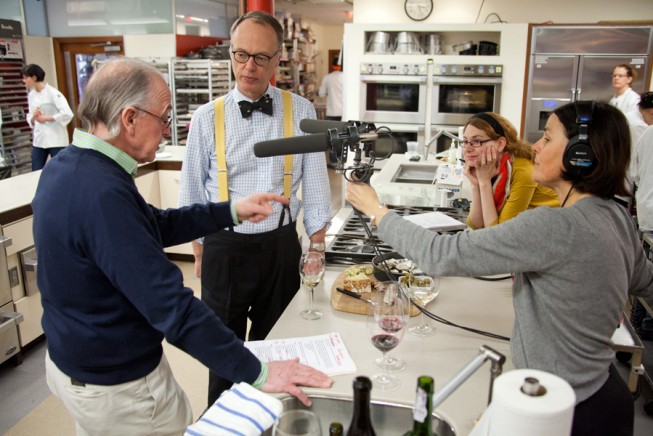
It was the Widow Clicquot (Veuve Clicquot) who around the turn of the 19th century developed several now-standard techniques for making Champagne both reliably sparkling and profitable when produced on a mass scale. And it’s really from this time forward that the heavy-duty marketing of Champagne as an indispensable accompaniment to the good life gets rolling. Today, Champagne is the wine of celebration par excellence, to the point where one only has to bring out a bottle for someone to ask “what’s the occasion?”
I don’t have any interest in taking the shine off Champagne but am going to suggest that one tradition surrounding fine French bubbly would be better put behind us. A serious wine like Champagne deserves better than to have its many charms rendered null or nearly so by the unserviceably skinny, strait-jacket of a glass in which it is now almost universally served. I refer here to the narrow, columnar Champagne flute.
Yes, bubbles are the region’s calling card, but let’s not forget that Champagne is first and foremost wine and only secondarily wine with bubbles—and we know quite a lot about what shape of glass does the best job of making everything wine has to offer available to our senses.
Listeners will be familiar with this format as the standard one encountered in every restaurant that cares enough (and knows enough) to provide proper wine service. It has a broad, steady foot about the size of the bowl above, at its widest, which it supports by means of a slim connecting stem. The bowl of the glass is roomy and nearly spherical near its base, tapering gracefully toward a rim of somewhat narrower width.
This standard shape is capable of numerous interpretations while retaining the key elements: a capacious bowl that permits the wine to be agitated and aerated (swirled) with a motion of the wrist and gathers the liberated aromatics near the opening where they can be readily and fully appreciated. The rim is broad enough to allow the taster to put his nose right into the glass.
A serious wine like Champagne deserves better than the unserviceably skinny, strait-jacket of a glass in which it is now almost universally served.
My goal for this segment was to convince Chris by demonstration that this conventional style of wine glass is a far better vehicle for enjoying Champagne than that silly tube called a flute.
To emphasize how perfectly useless the chimney-style glass is, I began with a slightly exaggerated version. It’s a glass I pulled from my cabinet—short and very narrow, it’s the kind of glass you would drink vodka shots from. About an index finger in height, straight-sided and no more than an inch in diameter, it was easy for Chris to see how limiting this architecture is for getting at the Champagne poured into it. He readily agreed that it’s not possible to perform any sort of agitation or aeration by swirling, doesn’t gather the aromas together and lift them toward you, and try as you might, you just can’t get your nose into the glass. It was a bit, he noted, like drinking through a straw.
When we shifted to the standard Champagne flute, the similarities with the vodka glass were all too apparent. The same chimney-like configuration made swirling impossible and excluded the nose. In fact, if you set out to design a glass aimed at limiting the taster’s experience of this lovely wine (we were tasting the Benoit Lahaye Brut Nature with no additions of SO2) you couldn’t do better than this.
Chris noticed an immediate and dramatic difference when I gave him a pour in the capacious, conventional stemware. He was able to give it a vigorous swirl and get his nose right down inside the glass. All those wonderful Champagne-y flavors and aromas the winemaker worked so hard to build into the wine bounded to the fore. It wasn’t a close call.
If there’s a drawback to this approach, it’s that you may be so enchanted by the fullness of your Champagne experience that you’ll swirl and swirl again, encouraging the release of CO2 and hastening the moment when the bubbles begin to fade a bit. But Champagne is much, much, more than bubbles and putting too much emphasis on the force and persistence of the fizz misses, in my opinion, the entire point.
If you’re still in a bit of doubt about whether to heave those flutes in the recycle bin, be advised that professionals don’t make use of them when tasting and judging Champagne, nor do the Champagne houses when making their assessments of various lots and deciding how much of what will make up their various cuvées.
Flutes are for orchestras, not fine wine. It’s one Champagne tradition we’re better off without.
Stephen Meuse can be reached at stephenmeuse@icloud.com